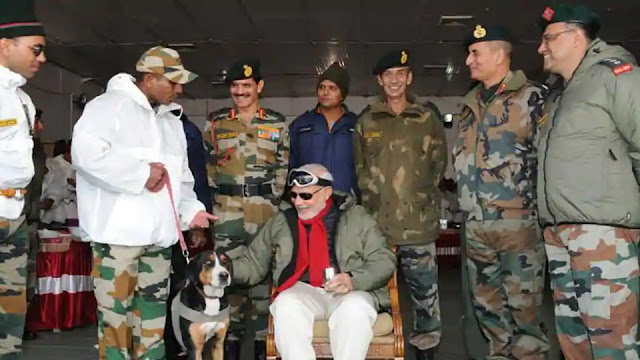 |
| Indian army has been sitting on the Saltoro Ridge at heights touching 22,000 feet round the year since 1984(Reuters image) |
- Advertisement -
- Advertisement -
In order to put the Indian Army on the defensive and convince the general public that the People’s Liberation Army (PLA) is vastly superior to its Indian counterpart on the battlefield, the Chinese propaganda machine, or psychological warfare machine, has been using the 1962 border conflict for the past 58 years.
The same mentality led the PLA to cross the Line of Actual Control (LAC) in Galwan and the rugged Finger 4 spur on the north banks of the Pangong Tso. However, the Indian Army took over at Galwan and on both banks of the lake, undermining Chinese hubris, and in fact posing a threat to the PLA garrison at Moldo across the Spanggur Gap in the Chushul region.
A frustrated PLA opted to set up an anti-aircraft battery on Black Top, south of Pangang Tso, and roll out major battle tanks to intimidate the Indians after being caught off guard by their actions on August 29–30. Without realizing it, the PLA media machine is shrieking war with India while using standoff weaponry rather than World War II-era equipment like tanks.
Despite the fact that both China and India have committed to leave Ladakh through their respective foreign ministries, the exercise is quite difficult and would take some time. The withdrawal must be carried out in a way that ensures both sides’ security and prevents the irredeemable PLA from taking over Indian Army posts that have been freed up by improved border logistics and infrastructure. Status quo ante as it was in early April is the greatest choice, and anything less is an attempt at obscurity.
The Indian Army today does not fight with.303 Lee Enfield bolt action rifles, light machine guns, three-inch mortars, or light tanks, despite the Chinese’s constant harping on India’s defeat in 1962. The Chinese leader in Beijing will undoubtedly learn from a transparent battlefield in Ladakh that there are more Indian troops posted north and south of Pangong Tso than there were deployed overall during the 1962 War.
Due to standoff weapons, laser-guided bombs, and beyond visual range missiles used by both sides, top Indian diplomats and military commanders are certain that the conflict, if forced by the PLA, will result in more casualties on both sides in the first 15 minutes than the whole 1962 war.
They are aware that when heavy weapons and rockets take control of the battlefield, tanks and ground forces will mostly be used to hold and seize territory.
India possesses enough standoff weapons and deterrent to ensure that the PLA takes a significant hit in already sensitive Tibet and Xinjiang province, even though the Chinese ruler and his western theater commander are blinded with ambition to prove to the world that a new global power has arrived.
The One China policy can be overturned by an aggressive Indian response, but the contrary is also possible and might damage New Delhi’s credibility.
Beijing needs to face the harsh truth of the situation because it has to deal with an army that has been fighting at altitudes of up to 24,000 feet since 1984 and an insurgency in Kashmir and the northeast since the country’s independence. The Indian Army is no longer forced on the defensive by the 1962 conflict; instead, it is motivated.


